Adam Morina
Designer
Game/Tech Design
Narrative Design
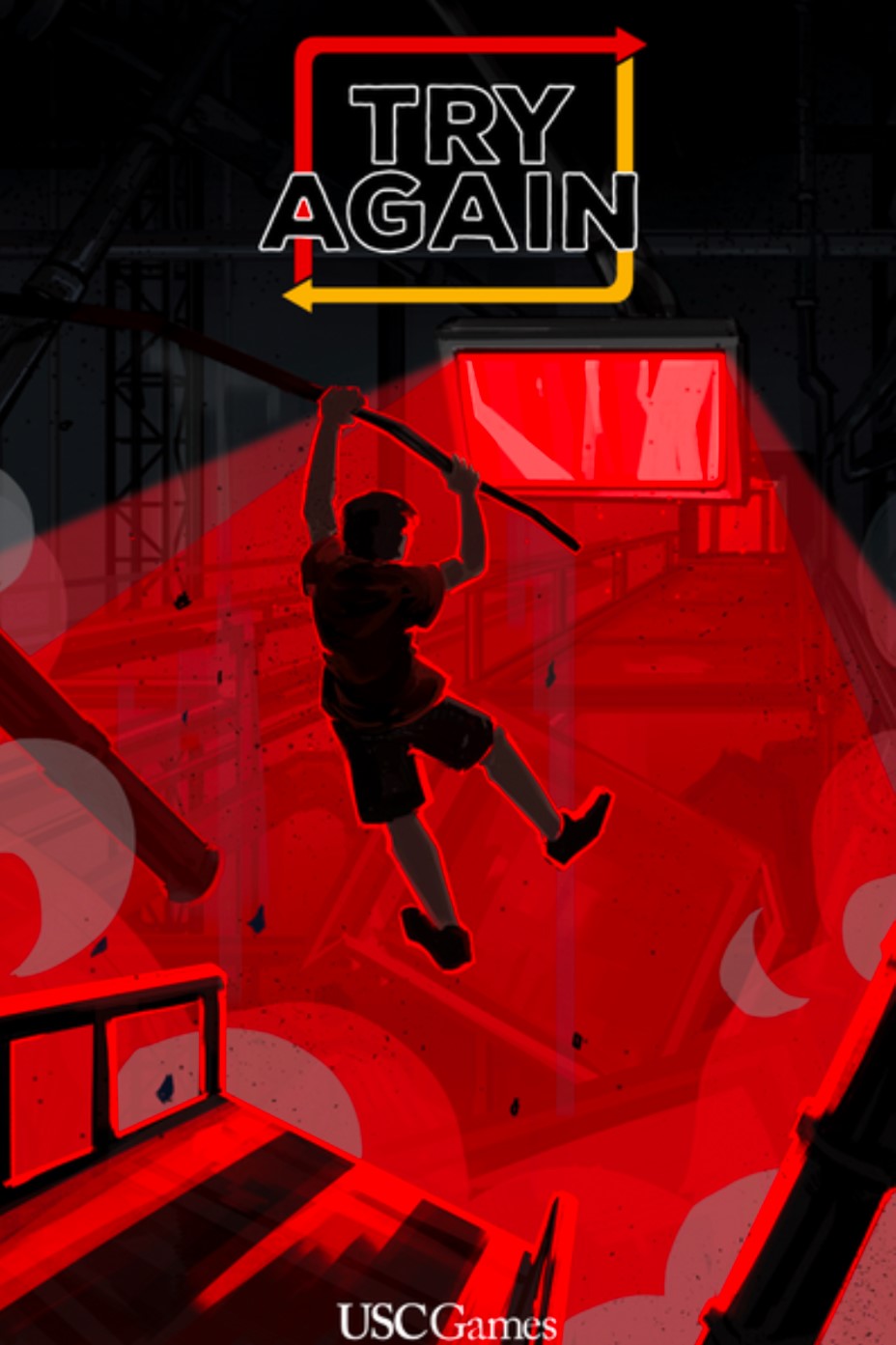
Official Walkthrough
Trailer
Website:
Try Again
Current Status: Gold Master
ROLE: Director (Creative & Game)Click for Try Again EP (2 songs produced by me)
TRY AGAIN is a 2.5d, fast-paced, meta, platformer” about a video game temp character named Benny who is trapped inside of an unfinished game by a mysterious, insecure, Oz-like figure called, “The Designer.” The Designer is up against a deadline from her publisher and it’s her last day to test. Benny needs you to get him out of this sisphyean, grey-box facility.
- Directed, managed and assembled a team of 20+ designers, engineers, tech artists, usability researchers and producers. With a focus on managing Design & Engineering teams as well as implementing features ranging from level design to audio systems. Try Again will be featured in Center for New American Media’s, Confluence, coming soon to PBS. Our protagonist, Benny, is played by Nolan North.
- Conceptualized, and built the original prototype which drove the creative vision. Selected and funded as a specialized Advanced Game by USC Games out of 70 submissions. Manage an 18-month production schedule based on agile software development methods.
- Developed and implemented game mechanics, base character prototype which were used to onboard every department on our team.
- Lead and manage design + engineering departments from prototype programming to deliverable, locked code, and game design within week long sprints
- Level designed on paper, prototype & implemented full level with real-time scripted level changes. Examples of this are shown below:



Custom Movement System
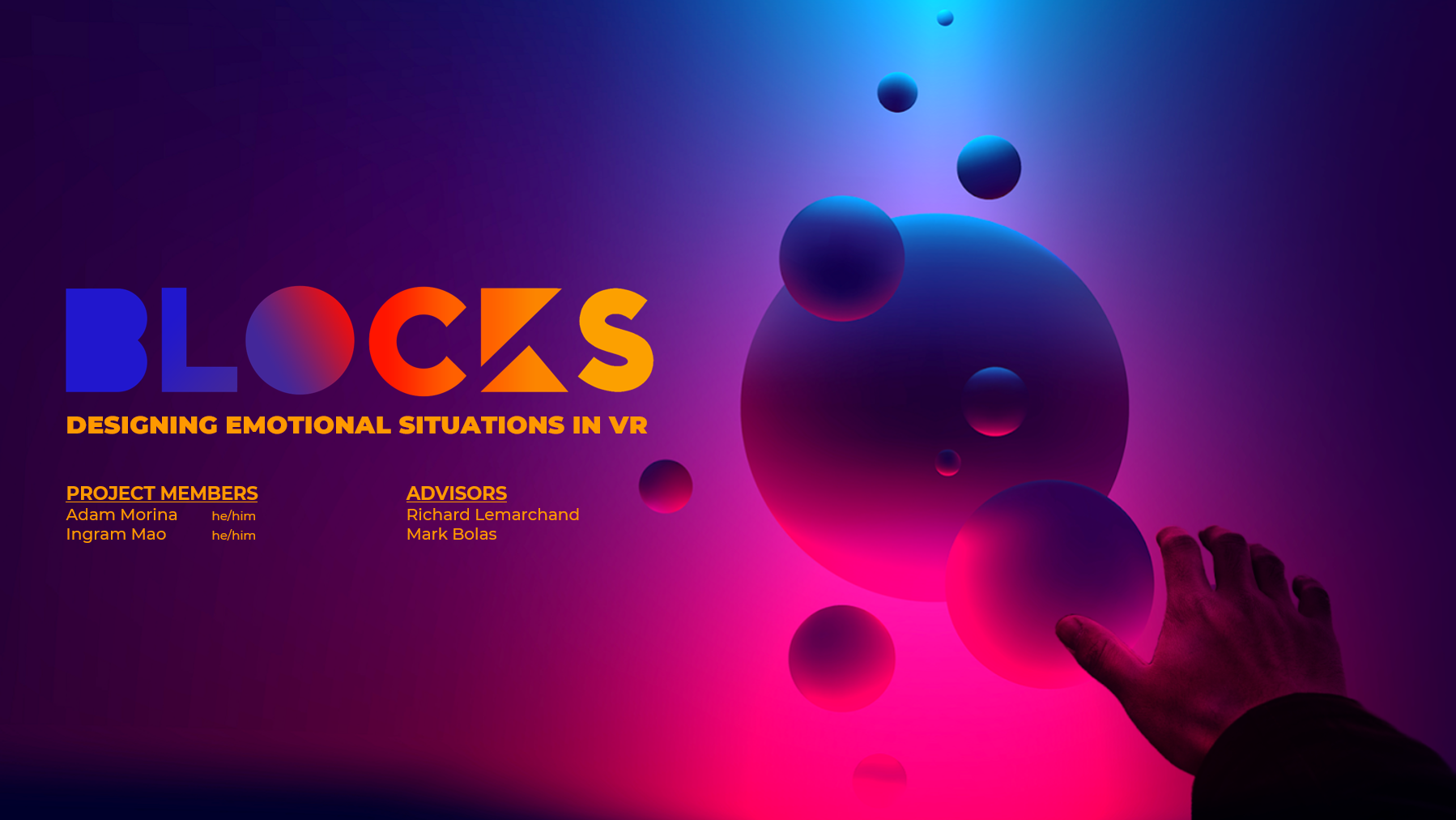
Blocks is a VR interactive narrative experience about an installation artist who has lost his will and ability to create after the death of his father. Desperate to create again for an upcoming show, players enter the mind of the artist to rebuild his fractured imagination. Blocks aims to deliver an immersive experience that maximizes the potential of home VR. This is the first Up Above Studio production, experimenting with new approaches in narrative, audio, spatial and interaction design in Virtual Reality. Blocks is inspired by Gaspar Noe's "Enter the Void," minimalist artworks by Doug Wheeler, and Ninja Theory's Hellblade: Senua's Sacrifice.
Blocks is a stationary experience that utilizes performative gestures as its core mechanics. User's body performance is designed to correlate with the emotional arc of our protagonist. The first level, Anger, tasks players with swinging their arms to control hundreds of triangles. The actions taken by the player are a byproduct of the stress/anger felt by the protagonist. The second level, Hope, has players discover hope by lighting up the darkness. Players help the protagonist come to terms with the loss of his father. Blocks is about finding light in the darkest of moments. We sought to tell a story that teaches us no emotion is permanent, and no feeling is final.


Blocks was Made with:
Unity 2021, C#, Cinema 4D, Maya
Detailed Work, Build & Goals
ROLE:
Co-Director
Programming
Narrative Design
Audio Design & Engineering
My work on the game ranged from prototyping game mechanics such as touching, pushing and waving to implementing my audio design. The story plays out entirely through audio/dialogue while the player interacts, and repairs lost sculptures in the protagonist’s mind. The game is being built by a team of two. Because of our small team, I’m required to wear a lot of different hats. First, is organization and management. We focused our work using concentric development, pioneered by Mark Cerny. In order to develop a 10 minute game in 3 months, we started with mechanics, moved into pre-production where we delivered a detailed macro chart (scrollable in image above). We then broke down every single task, no matter how small, into a detailed burndown chart breakdown of the hours. Handling our production this way allowed us to adjust our scope early. We found the best parts of our prototyping, and cut out any weight that did not fit within the narrative.
Audio is everything in VR. In Unity, I designed and scripted an adaptive audio system that changes the triggers out for new sounds. I wanted to build a feeling of dynamic subconscious audio like Hellblade. The player triggers extra narrative pieces by unknowingly ray casting their eye line into triggers throughout the game. This creates a feeling of space, while players are isolated in our protagonist’s brain. I also designed, scripted and built our Hope level which tasks the player with “discovering” hope through a randomizer system. When the player points at a sphere, they are provided one piece of an evolving sculpture. Each sphere the player connects with continues to build the sculpture. As a player, you do not know where each sphere is going to appear, creating a twister-esque game feel. I built this by looking at our character and the internal/external motivation and driving the player experience by connecting our core mechanic to character.

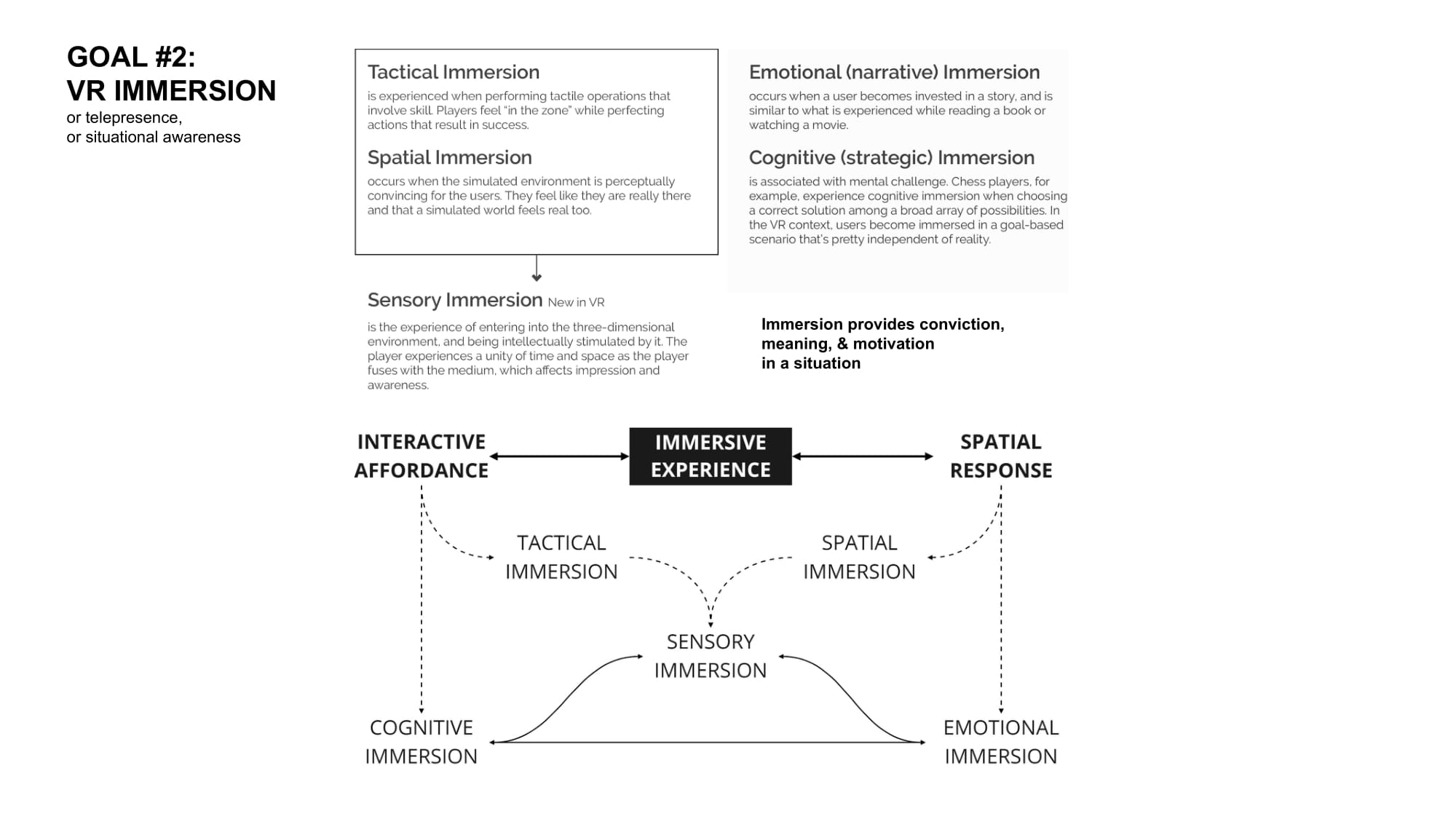
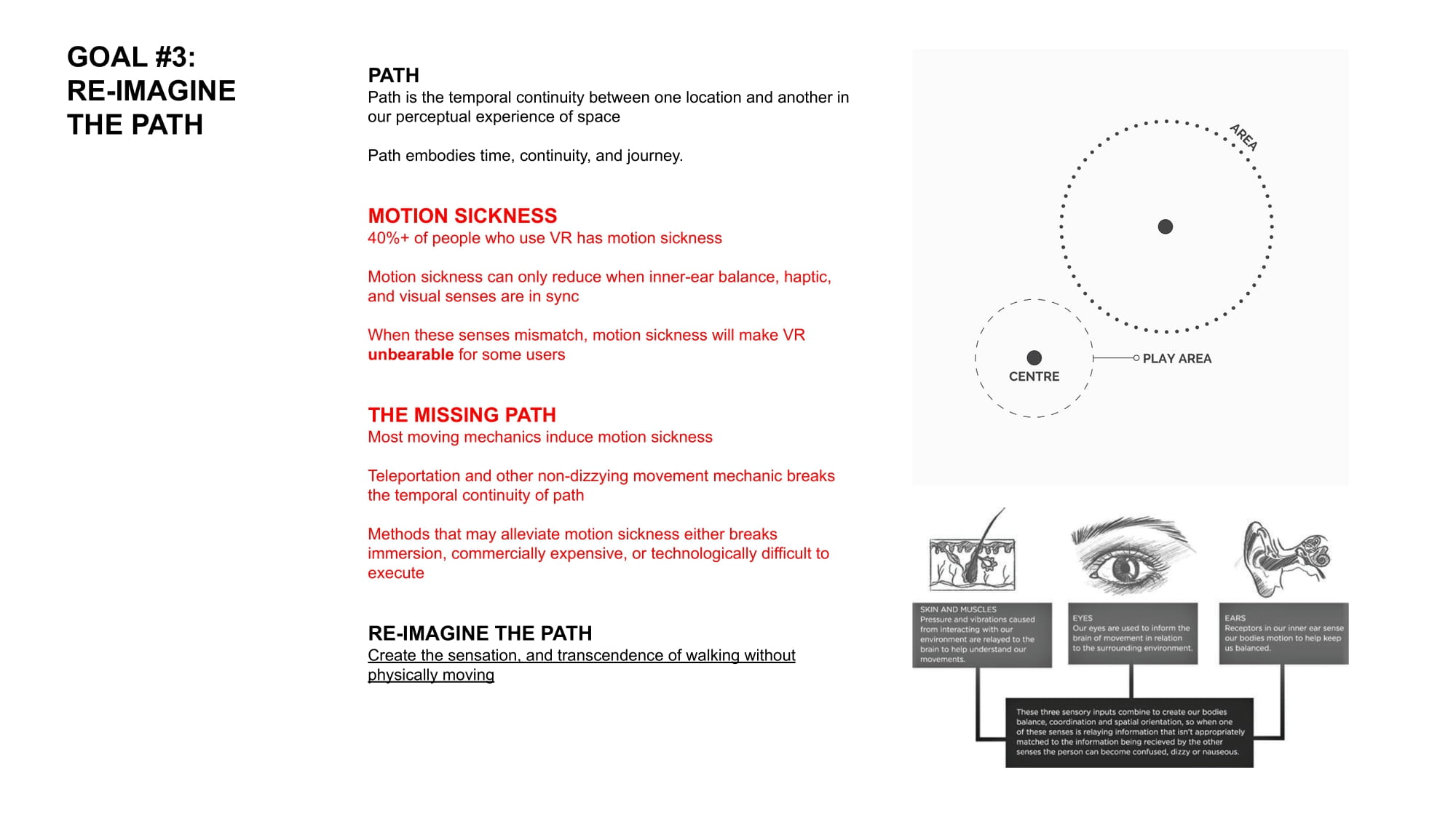

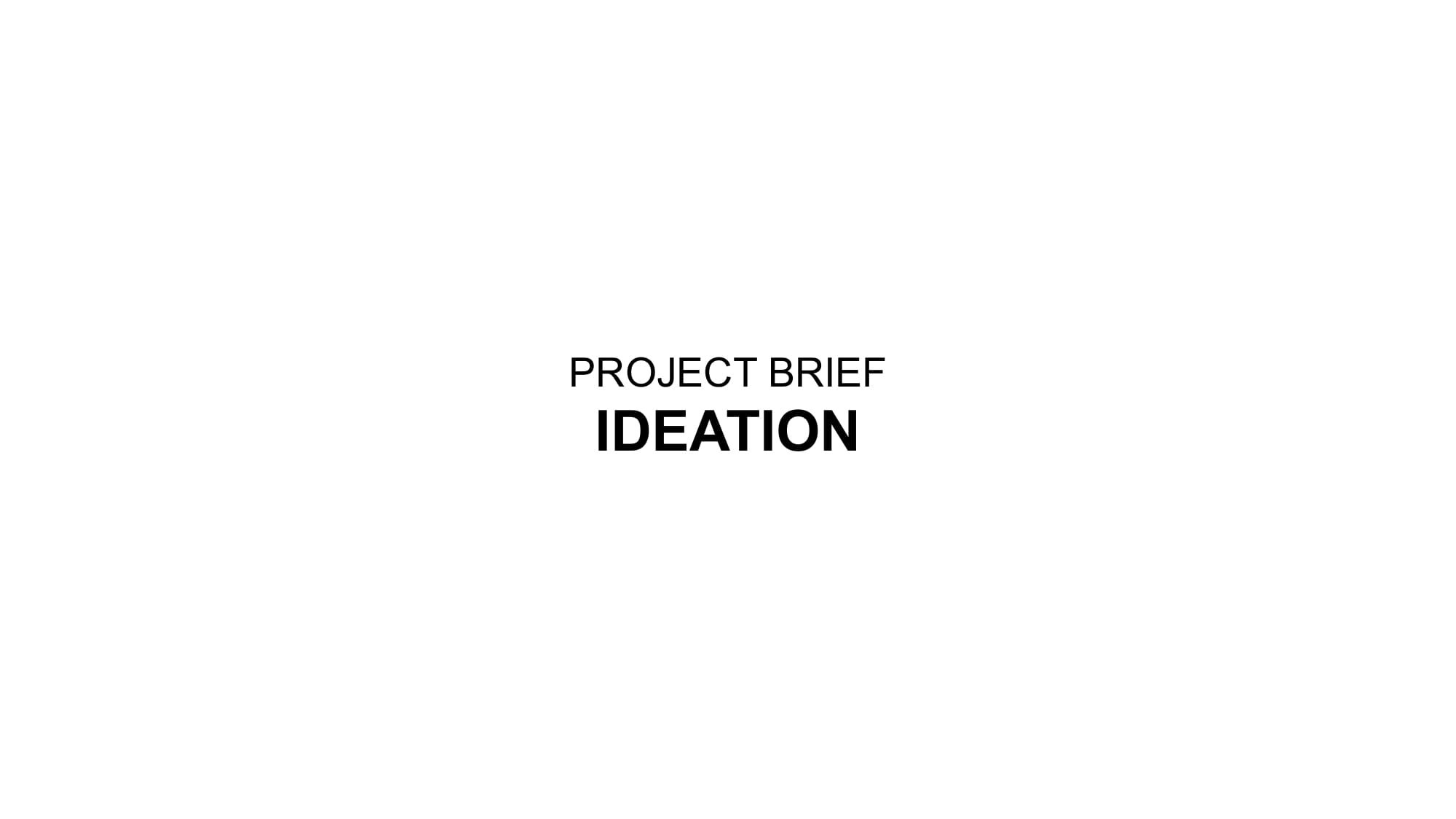
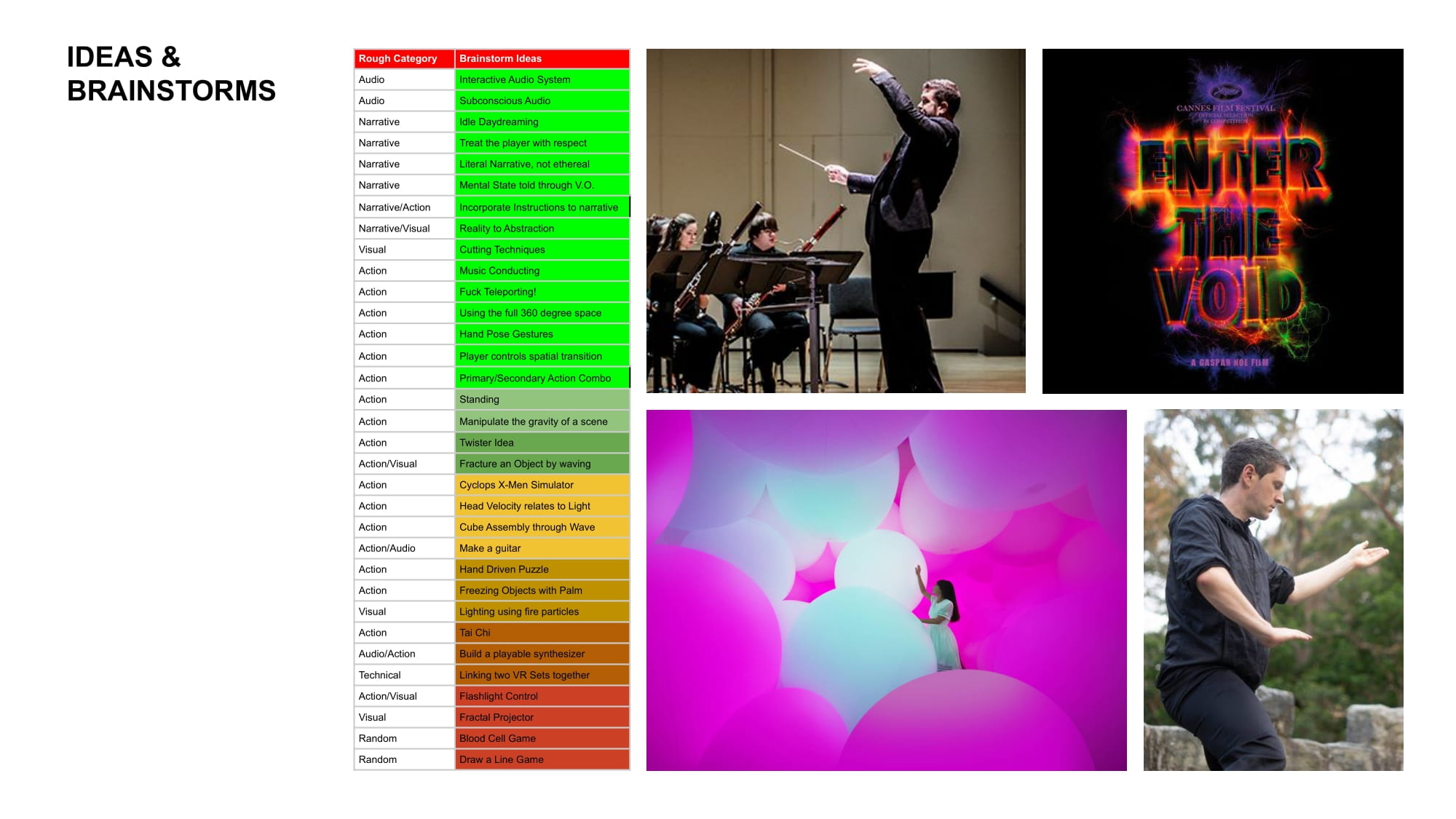

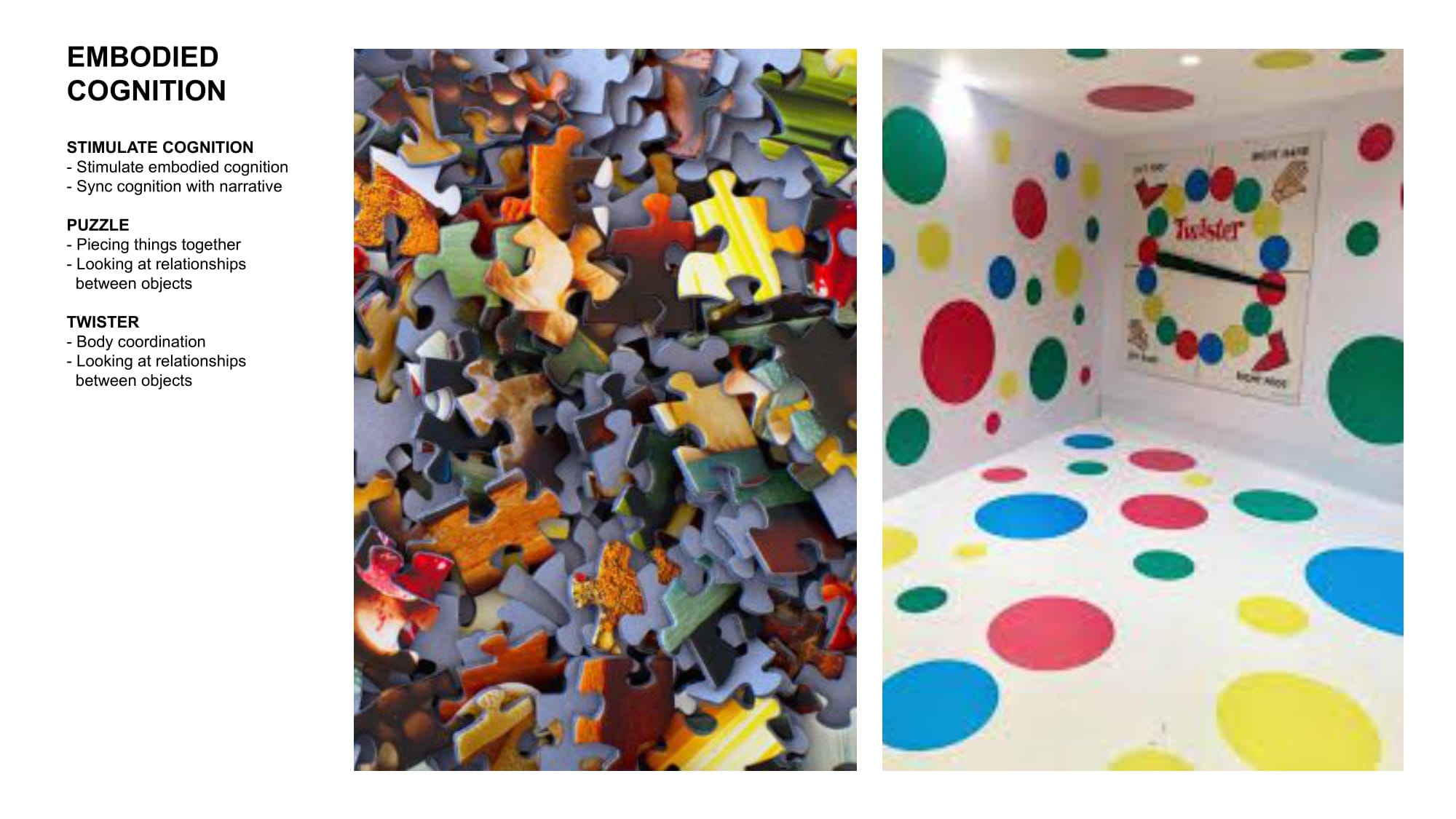


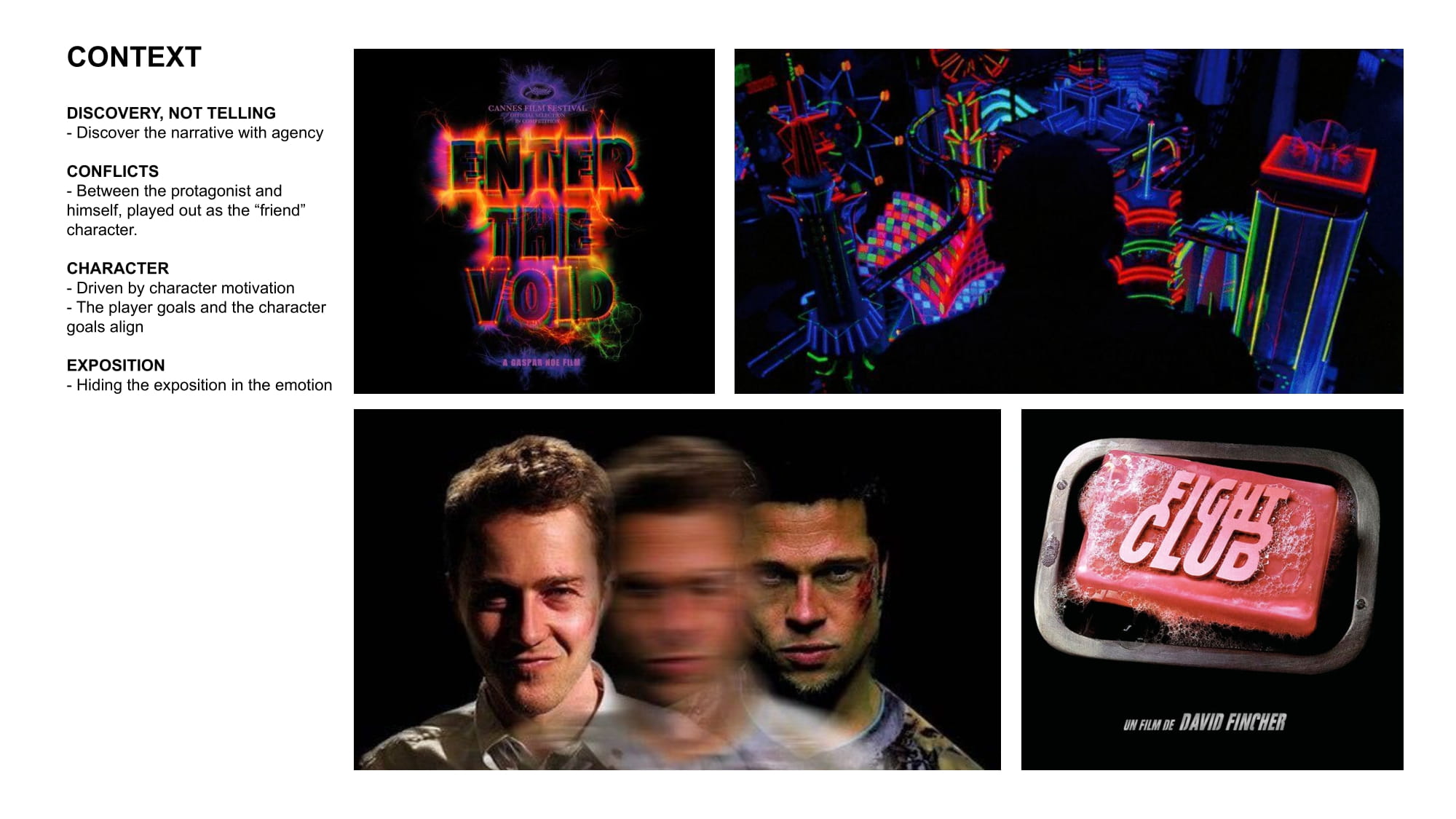
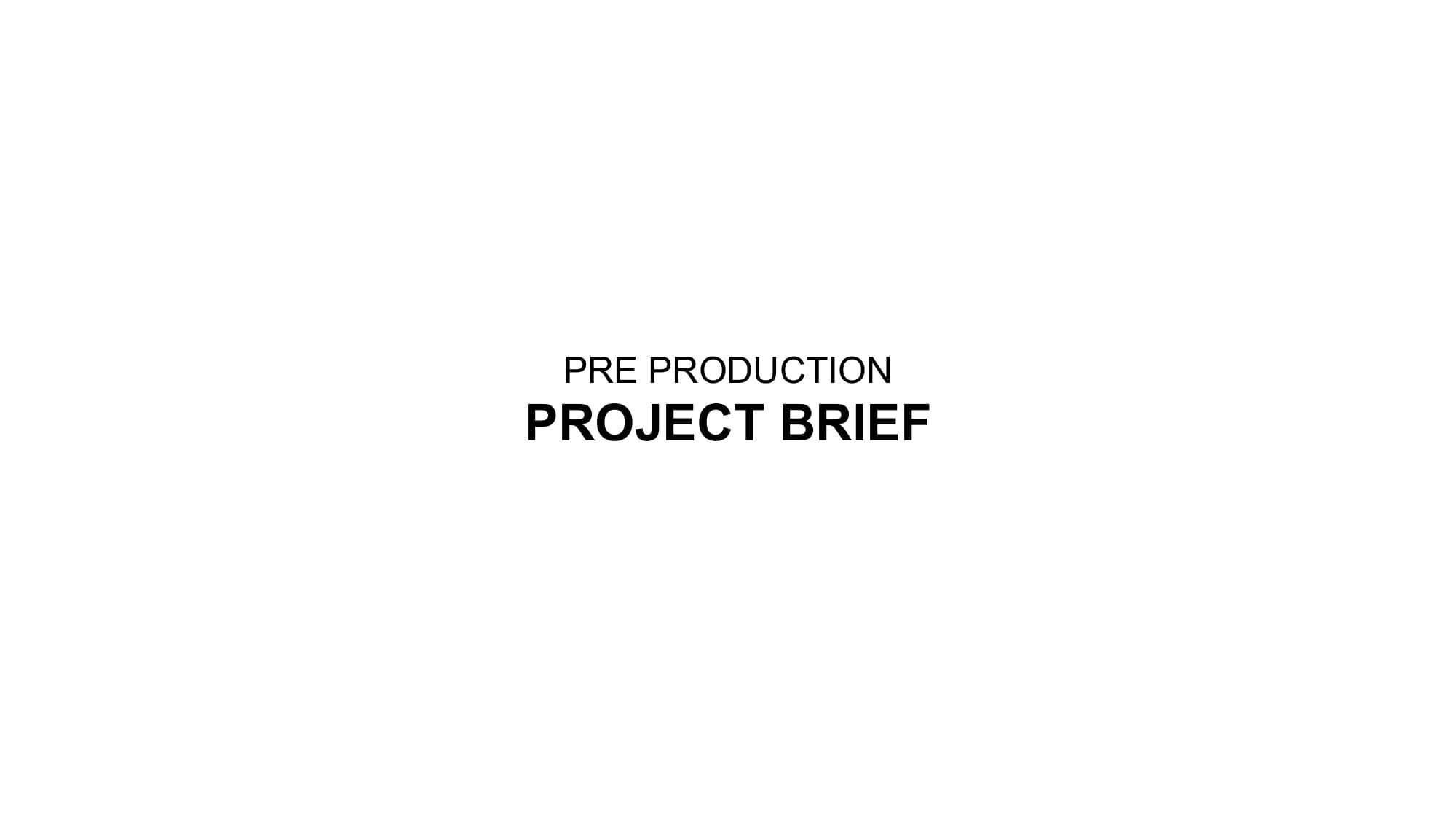
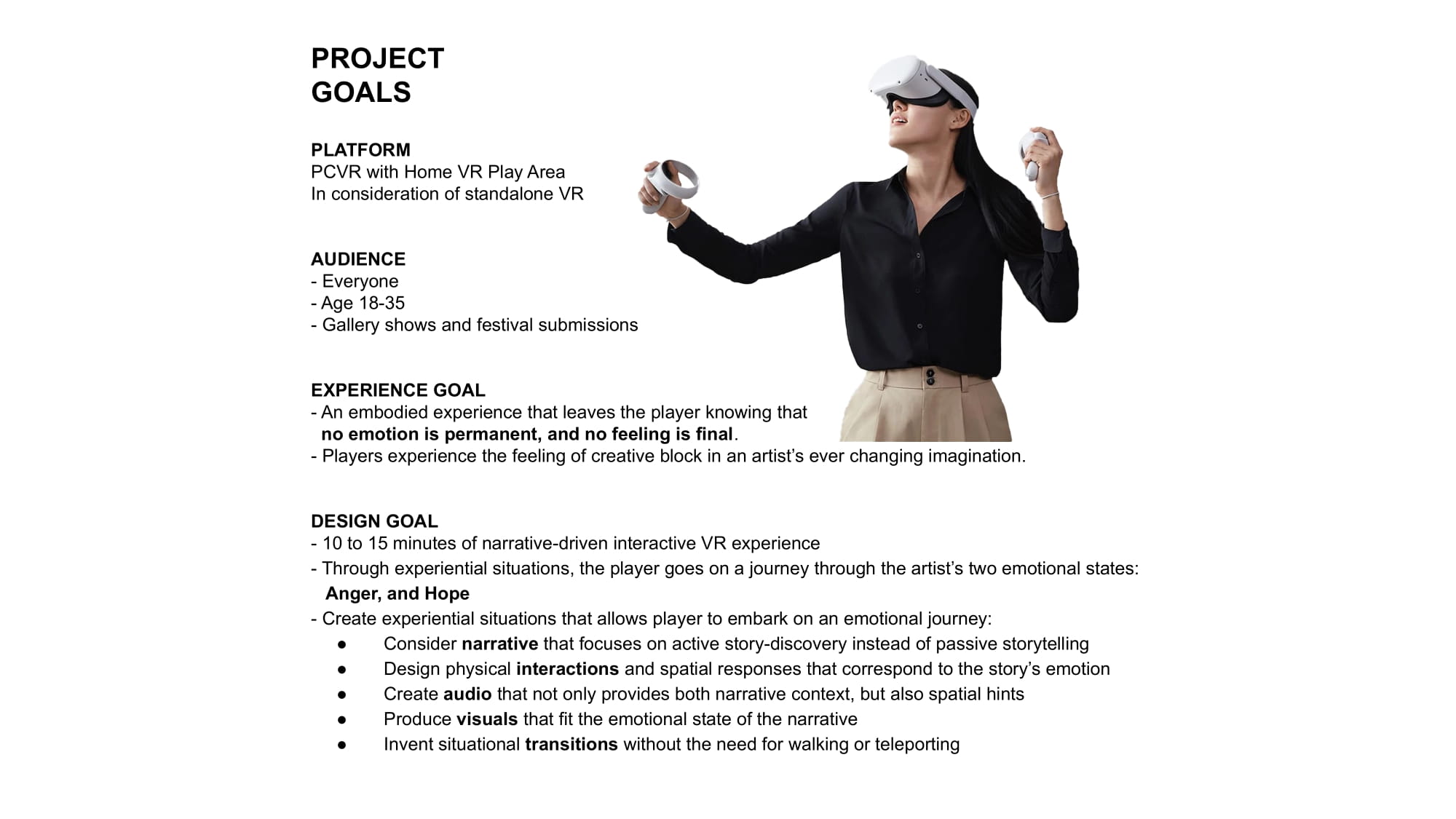
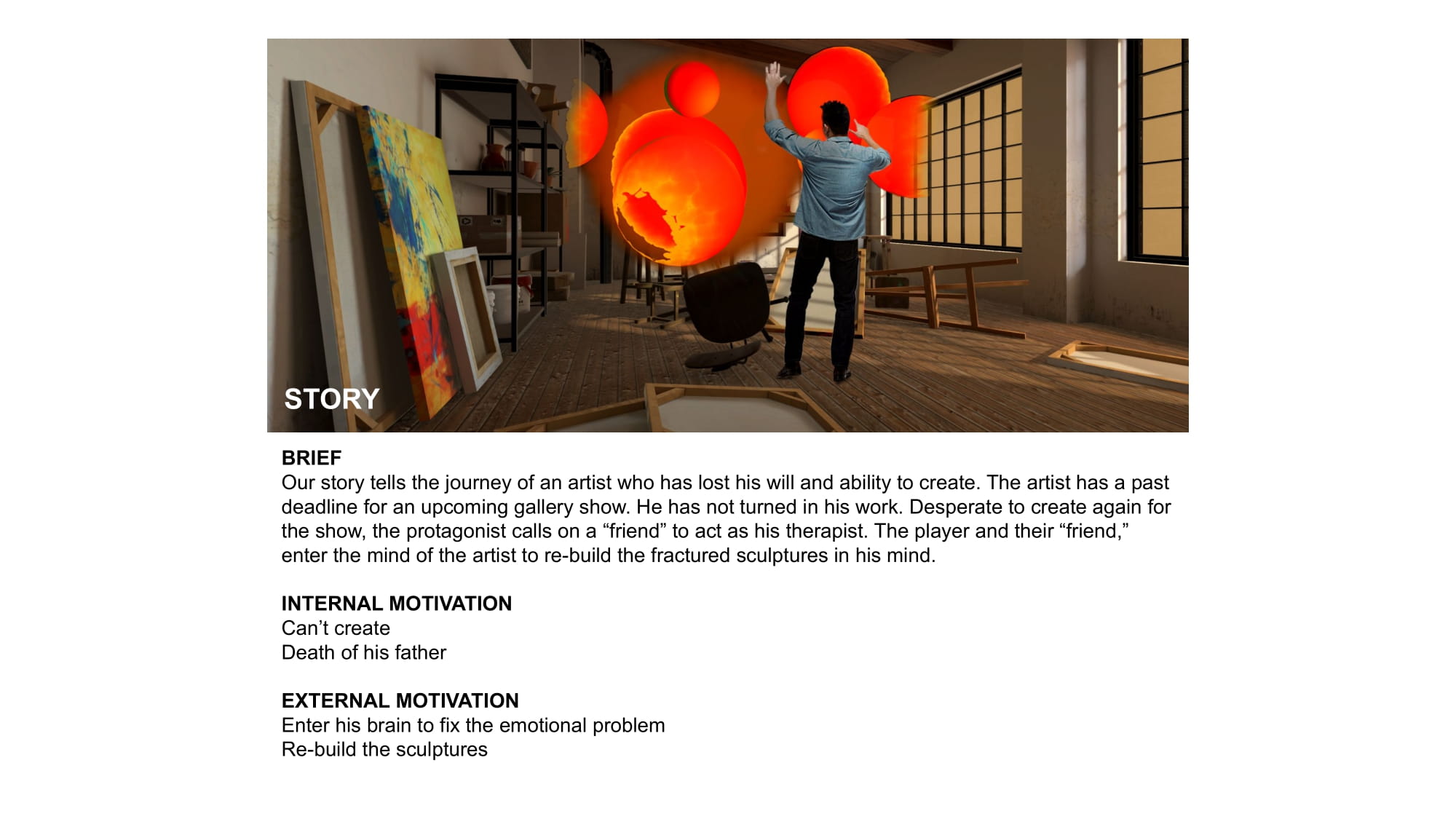

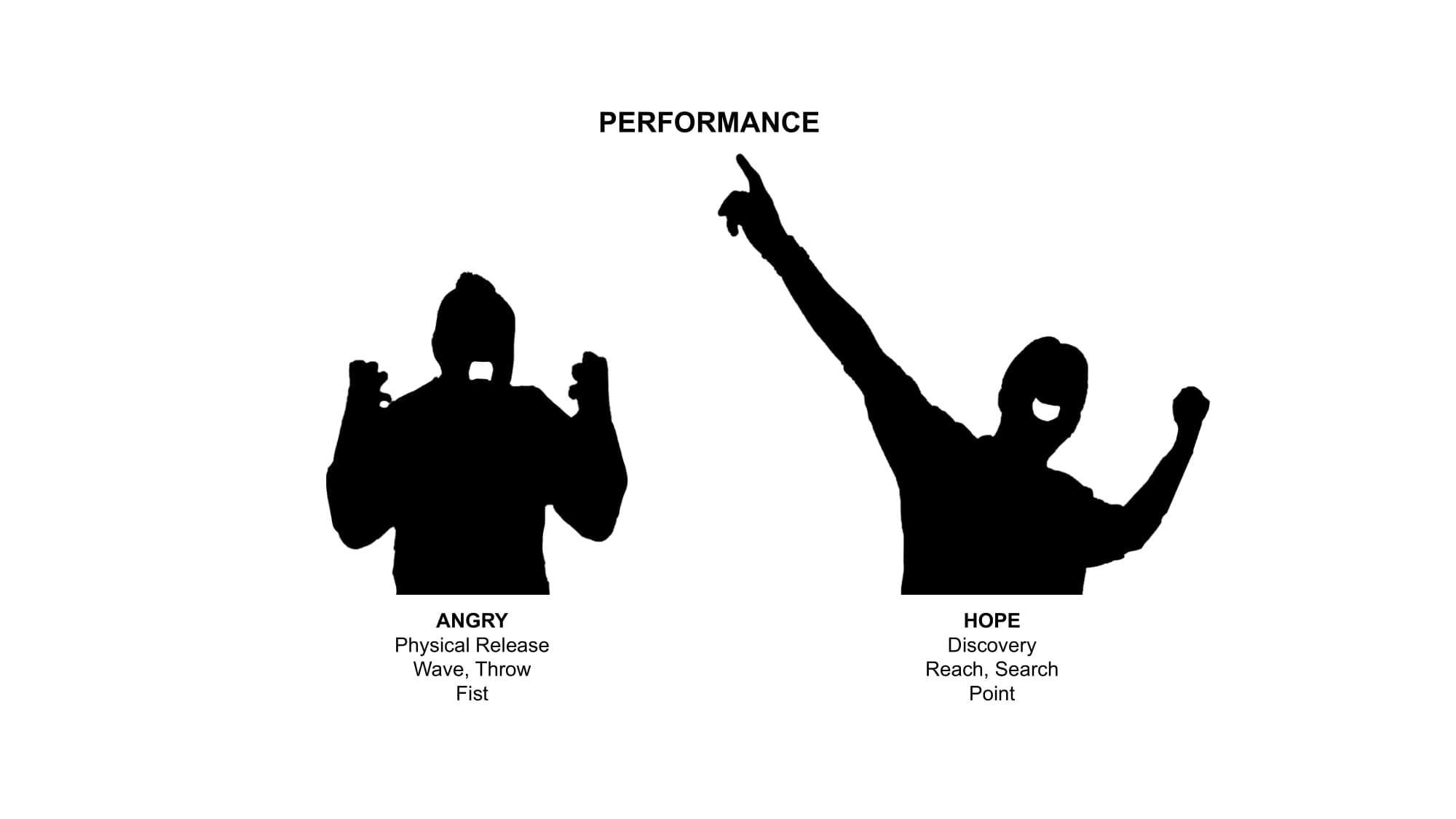


Narrative Writing
There You Are is a narrative driven, character focused, third person game. The director on this project was third year thesis student, Rong Deng. She led our team in creating a powerful tale about growing up, loss and family connection. I worked as narrative designer and narrative writer from the beginning to the end of this project. A key pillar to There You Are was telling a story with multiple endings. You play as Su, a teenage girl who lost her mother and has a difficult relationship with her father. We set out to build a realistic character that adapts because of player choice. Teenage years can be tough. We sought for players to personalize their experiences in the game, basing decisions on our own life experiences. Su has many simple choices through dialogue in the story.
I developed a narrative system in Unreal Engine’s Blueprint that allowed us to test multiple dialogue reactions on screen. Because of this, we were able to adjust the narrative design in different directions that worked without bogging us down in development. The other piece of my work on this game was as Narrative Writer. We focused on telling a simple story that provided us the opportunity for our protagonist, Su, to have an emotional arc. I worked with our director to record our V.O. actors and implement dialogue. We wanted the player to interact with anxiety. Su’s breathing must be controlled when her stress becomes too much. Connecting emotional experience to simple gameplay was our core narrative design goal on this project. When Rong presented this thesis project to the USC Games Faculty, it was met with wide acclaim and praise for the Narrative Design.
There You Are was made in Unreal Engine using Blueprint and C++
Don’t Touch Anything
(Click Title to play on PC)
(Click Title to play on PC)
Lead Programming
Lead Game Design
Audio Design
Don’t Touch Anything takes the classic Addicting Games style wackiness and combines this with a time trial chaos simulator. Don’t Touch Anything is our final project for Professor Margaret Moser’s Unity course. I co-directed, designed and produced the game in one month using concentric development. I built the animation system design that swaps between walking, running and stumbling. I also programmed the scoring, audio, physics, and lighting systems to create a highly sensitive house, ripe for destruction. We wanted the player to feel like they could lose control at any second. We designed a one minute narrative that motivates the player to break the rules.
Don’t Touch Anything was built in Unity using C#.
Out At Sea
Lead Programming
Narrative Design
Lead Game Design
Lighting and Custom Ocean Shader by Adam Morina and Jebby Zhang
This project began with an idea to build the ocean. My partner and I had taken a deep dive into shaders and shader graph. Through our studies, we developed a serious skill for shader graph in Unity. We decided that we wanted to push ourselves and create a moving ocean, complete with different shades of blue and realistic water patterns. After weeks of work, we constructed a natural ocean tile. This can be controlled in the Unity inspector which can boost the ripples and strength of the waves. After we built the shader, I wanted to construct an ethereal visual novel that used the beautiful seascape. I’ve always been fascinated with sea shanties and lost lighthouse tales. I designed this piece to re-create the feel of ghost stories influenced by lost messages in a bottle. I built the scene by rigging the character, creating realistic night time lighting and developing blocking for the boat and camera. I wrote the poem/narrative to feel like a note lost long ago, waiting for its recipient to find it.
Out At Sea was built in Unity using C#.
In The Forest
Lead Game Design
Programming
Lighting
Built as an environment/spacial exercise. With In the Forest, I tried to build an outdoor, audio zoo. The goal of this game is to feel the denseness and foreboding forest. The last moment sends the player into the sky, so that they can overlook the vast sandbox and mountain ranges. The detail of the lighting is scripted by using post processing in a non-HDRP Unity project. Particles and wind effects help bring the forest to life for the player.
In The Forest was Built in Unity and C#.
The Jefferson
Misfit
Technical Narrative Design
Narrative Writing
Lead Game Design
Our approach to this game was simple; we wanted to reference the look and tone of the classic noir tales. This tasked our team in designing a simple narrative with many choices. We developed a system by using JSON files in C# to direct scenes by using A1, A2 directions, mimicking Twine in Unity. This allowed us to write within our code, making it easier to adjust the story. Writing is re-writing, and having to re-develop for each re-write would have been less efficient for our team. This video only displays Act 1 of a 20 minute 4 act story. The Jefferson Misfit tells the story of a misunderstood teen, desperate to clear his name after he’s wrongfully accused of cheating.
The Jefferson Misfit was made in Unity using C#.